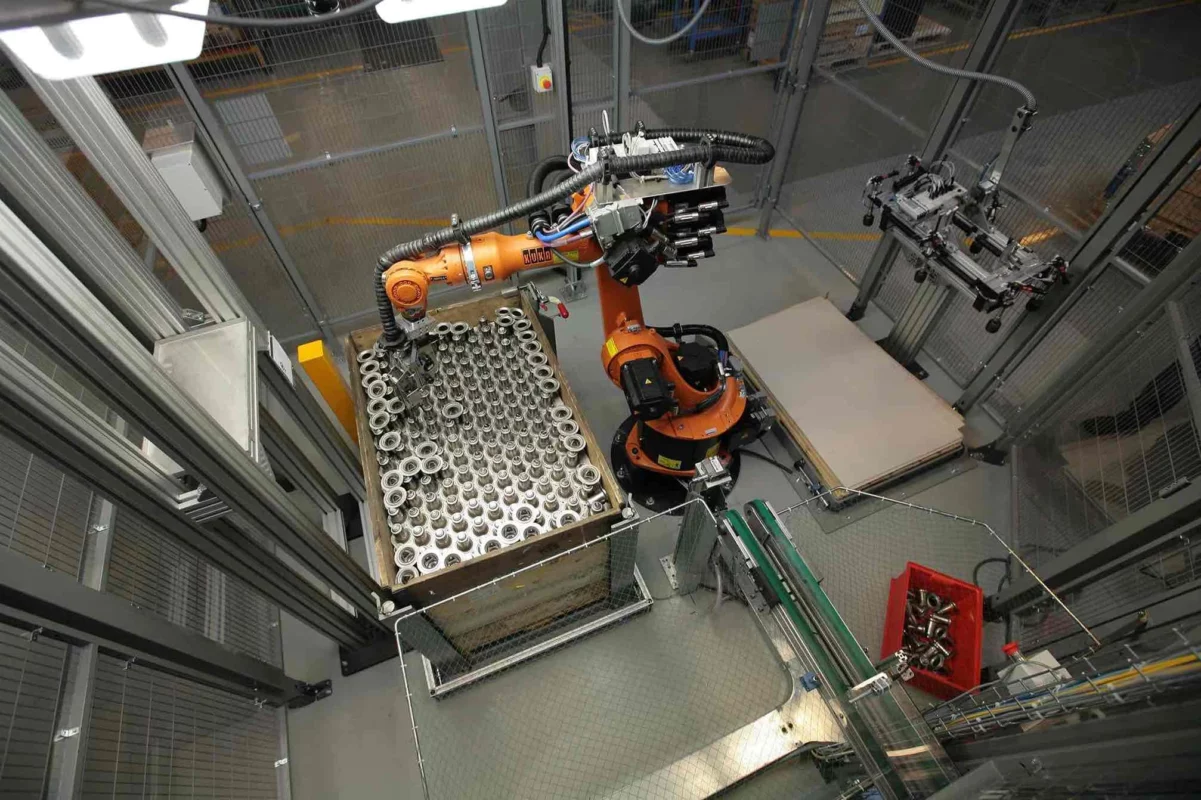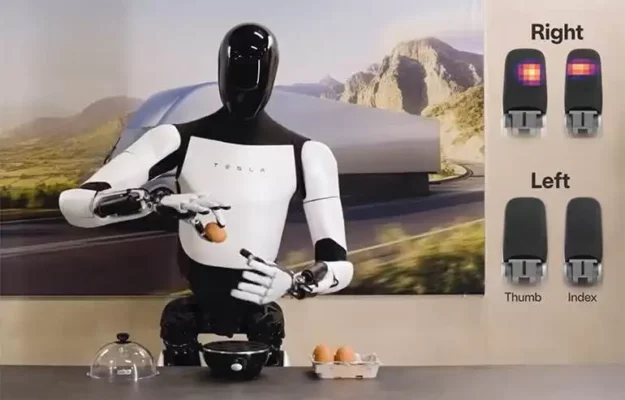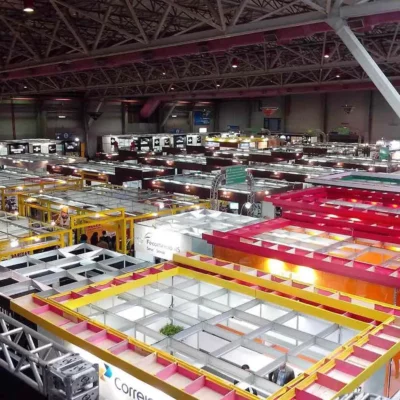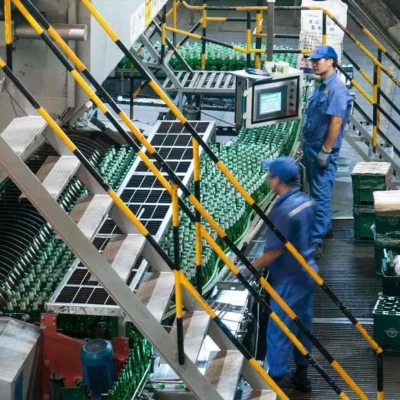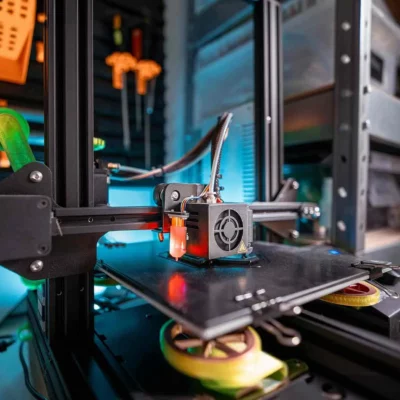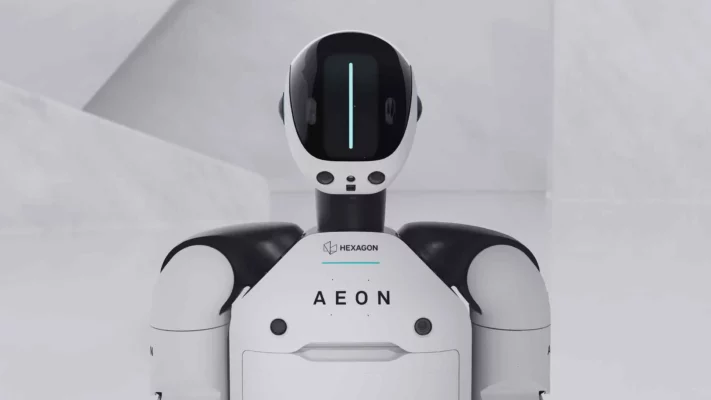Bin-picking automation can save you time, cut errors, and speed up production. But finding the right system isn’t easy. Your parts, robots, and workflow all need to match. Traditional bin-picking struggles with random objects and fixed programming. That slows you down. A 3D vision-guided system solves this by recognizing and picking parts with precision. Whether you handle metal parts, boxes, or oddly shaped items, the right system makes a huge difference.
In this article, you’ll learn what to look for, what challenges to avoid, and how to pick a system that fits your needs—and makes your job easier.
What is Bin-Picking?
With bin picking, your robot can grab parts straight from a messy bin. You don’t need to sort or arrange anything beforehand. Using 3D vision, the robot sees the shape, size, and position of each part. It picks them up one by one, even if they’re tilted, stacked, or overlapping. This makes your process faster, easier to manage, and ready to scale when you are.
How It Works:
A 3D vision system scans the container to detect the position and orientation of each part. The robot then calculates the optimal path to grasp and move the item, adjusting its movements to avoid collisions and ensure precision. This process allows for efficient handling of parts, even when they are overlapping or positioned unpredictably.
Understanding Bin-Picking Systems:
Traditional Bin-Picking:
Traditional bin-picking systems only work well when parts are neatly arranged. If parts are stacked, tilted, or out of place, your robot often fails to grab them correctly. This causes mispicks, jams, and stops your line. To avoid that, you end up spending time manually sorting or resetting parts, which slows everything down and increases labor costs.
3D Vision-Guided Bin-Picking:
3D vision systems give your robot the ability to see and understand each part’s shape, size, and position. It scans the bin in real time and calculates the best way to pick each part, even if they’re overlapping or randomly placed. You don’t need to sort anything ahead of time. This improves accuracy, reduces cycle time, and keeps your production running with less manual effort.
Case Study: How Scape’s 3D Vision-Guided Bin-Picking Solution Transformed a Factory
Imagine running a busy factory where robots need to pick up hundreds or thousands of parts every hour. That sounds efficient, but it gets tricky when parts aren’t neatly arranged. If they’re jumbled, overlapping, or randomly placed, your system needs to handle it without slowing down. That was the challenge at Broen Valve Technologies. They build industrial valves and needed a bin-picking system that could accurately recognize, pick, and place parts without holding up production.
The Problem: A Messy Bin Means Slower Production
Broen’s biggest issue? Their parts weren’t always positioned the same way. Some were upside down, some were stacked, and some were tilted at odd angles. A traditional bin-picking system struggled to grab them correctly, leading to misplaced parts, production delays, and frustrated workers.
They needed a smarter system—one that could “see” each part, understand its position, and pick it up without hesitation.
The Solution: Scape’s 3D Vision-Guided Bin-Picking System
Scape’s bin-picking solution brought intelligence and speed to Broen’s production line:
✔ Advanced 3D Vision – The system scanned the bin, identified each part’s exact location, and figured out the best way to grab it.
✔ Smart Picking & Motion Planning – Instead of guessing, the robot calculated the most efficient way to pick and place each part. No jams, no hesitation.
✔ Seamless Integration – SCAPE’s system worked smoothly with Broen’s existing robots, so they didn’t have to change their entire setup.
The Result: Faster, More Reliable Production
With SCAPE’s technology, Broen’s robots picked and placed a new part every 8 seconds—without errors. That meant fewer delays, less downtime, and a more efficient production line.
Why Scape’s System Works So Well:
- Handles Randomly Oriented Parts – No need for perfectly arranged bins; the system adapts.
- Works with Any Robot Brand – No compatibility headaches.
- Easy Setup with CAD Models – Training new parts is quick and simple.
- 99.99% Reliability – Virtually no downtime or mispicks.
- All-in-One Solution – Scanning, picking, gripping, and placing—all in one system.
Scape’s technology didn’t just fix Broen’s problem—it transformed their production. The best part? This solution works in any industry where robots need to pick and place parts efficiently.
Want to see it in action? Watch the full case study video: Scape 3D Vision-Guided Bin-Picking Solution.
How Does 3D Vision Improve Robotic Picking?
Precise Object Identification:
3D vision provides accurate spatial data, enabling robots to determine the exact position and orientation of items. This precision allows for reliable handling of objects, even when they are randomly placed or overlapping.
Improved Efficiency:
By utilizing 3D vision, robots can adapt to variations in object placement without manual intervention, leading to faster cycle times and increased throughput. This adaptability is crucial in dynamic environments where product types and orientations frequently change.
How Can Robots Handle Items with Varying Shapes and Sizes?
Your robot needs to pick up objects of different shapes, sizes, and materials. Without the right technology, this can lead to mispicks, slowdowns, or even damaged parts. Advanced bin-picking systems solve this with smart gripping and vision technology.
Flexible Grippers for a Secure Hold:
Your robot’s gripper must match the object it’s handling. Vacuum grippers work well for smooth, flat items like glass or metal sheets. Finger grippers adjust to oddly shaped parts, ensuring a firm grip. Pneumatic grippers provide extra control for delicate or heavy objects.
3D Vision for Accurate Picking:
Your robot also needs to “see” what it’s grabbing. 3D vision systems scan bins in real-time, detecting the shape, position, and orientation of each item. Even if parts are randomly placed or overlapping, the system calculates the best way to pick them up).
Key Factors to Consider When Choosing a Bin-Picking System:
Not all bin-picking systems are the same. The right choice depends on your parts, production speed, and existing robots. If you pick the wrong system, you’ll run into mispicks, slow cycle times, and integration headaches. Let’s break down what you need to look for.
Object Types: Shape, Size, and Material Matter
Think about the parts you work with every day. Are they small screws, large castings, lightweight plastics, or heavy steel? Your bin-picking system needs to handle them reliably. Shape matters too. Uniform parts are easier to pick, but irregular shapes, holes, or size variations can cause issues for basic systems. Material is just as important. Shiny, reflective, or transparent surfaces like polished metal or glass can confuse standard vision systems. If you’re using these, you’ll need a high-quality 3D vision system that can detect and pick accurately. Otherwise, your robot may misidentify parts or miss them entirely.
Cycle Time: How Fast Does Your Production Line Move?
Speed is everything in manufacturing. If your bin-picking system is too slow, it can hold up your entire line. Most applications require the robot to complete a pick-and-place cycle in 5 to 15 seconds. In high-volume production, even a one-second delay adds up to hours of lost productivity. But speed alone isn’t enough. Accuracy matters just as much. A fast system that drops or mispicks parts will only create more problems. You need a solution that balances both speed and reliability to keep your process efficient.
Robot Compatibility: Will It Work with Your Existing Setup?
Imagine buying a new bin-picking system only to find out it doesn’t work with your current robots. Now you’re stuck investing even more money in new hardware, rewiring your automation setup, and losing time on reprogramming.
To avoid this, check if the bin-picking system integrates with your existing robots. Some systems are brand-specific, while others are more flexible. If you’re using robots from companies like FANUC, ABB, or Universal Robots, look for a system that supports multiple brands. The more flexible the system, the easier it will be to upgrade or expand your automation in the future.
Common Challenges in Bin-Picking Systems:
Bin-picking automation can make your production line faster and more efficient, but it’s not always smooth sailing. Robots still struggle with certain challenges, and if you don’t plan for them, you might run into costly slowdowns. Here’s what you need to watch out for:
Object Recognition: Can the System “See” Your Parts Correctly?
Your bin-picking system depends on vision technology to recognize and locate parts. If it can’t detect them accurately, your process breaks down. Shiny, reflective, or transparent parts often confuse standard vision systems, making it hard to find their exact position. This can lead to missed picks, dropped items, or jams. Advanced 3D vision solves this by generating precise depth maps so the robot can clearly see each part, even in cluttered bins. But not all systems perform the same. If your setup struggles with detection, you’ll end up dealing with mispicks, delays, and unnecessary rework.
Inefficient Sorting: Are Your Parts Stuck in a Bottleneck?
Even if your robot can recognize parts, it might still struggle to pick them efficiently. Poor system optimization can slow things down, especially when parts are tangled, overlapping, or randomly placed. Older or slower systems may take too long to process each pick, creating bottlenecks. In fast-paced production, even small delays add up. A few extra seconds per cycle can cost you hours of productivity each day. A strong bin-picking system should do more than just identify parts. It should also plan the best way to grip and move them. Smart gripping, AI-powered motion planning, and better end-effectors all help reduce delays and keep your line running smoothly.
Why Automated Bin-Picking Can Improve Your Operations:
Automating your bin-picking process can bring significant advantages to your operations.
1. Boosted Productivity:
Implementing automated bin-picking systems significantly enhances your warehouse’s efficiency. For example, automated storage and retrieval systems boost order-picking and storage productivity by up to 85%. [1] This leads to faster processing times and allows you to handle more orders with the same resources.
2. Enhanced Safety:
Automation reduces the need for manual handling of items, thereby minimizing the risk of workplace injuries. By delegating repetitive and strenuous tasks to machines, you create a safer environment for your employees, reducing the likelihood of musculoskeletal disorders and other injuries.
3. Greater Flexibility:
Modern bin-picking systems handle a wide variety of parts, regardless of their shape, size, or material. This adaptability allows you to efficiently manage diverse product lines without the need for constant system reconfigurations.
By embracing automated bin-picking, you’re not only streamlining your operations but also fostering a safer and more adaptable workplace.
Conclusion:
Choosing the right bin-picking system involves careful consideration of your specific requirements, including object types, desired cycle times, and robot compatibility. Advanced solutions like SCAPE’s 3D vision-guided system offer significant advantages in efficiency, reliability, and flexibility, making them worthy of consideration for modern manufacturing operations.
References:
- Material Handling Blog. (n.d.). Warehouse Automation Statistics. Retrieved on 5 February 2025, from https://blogs.material-handling.com/warehouse-automation-statistics/
